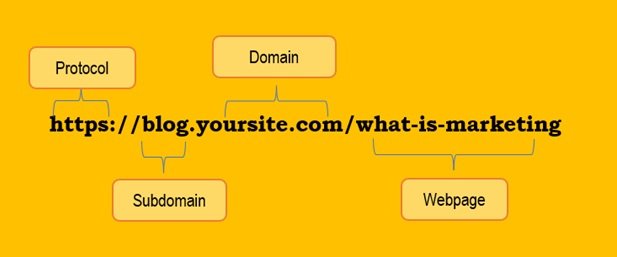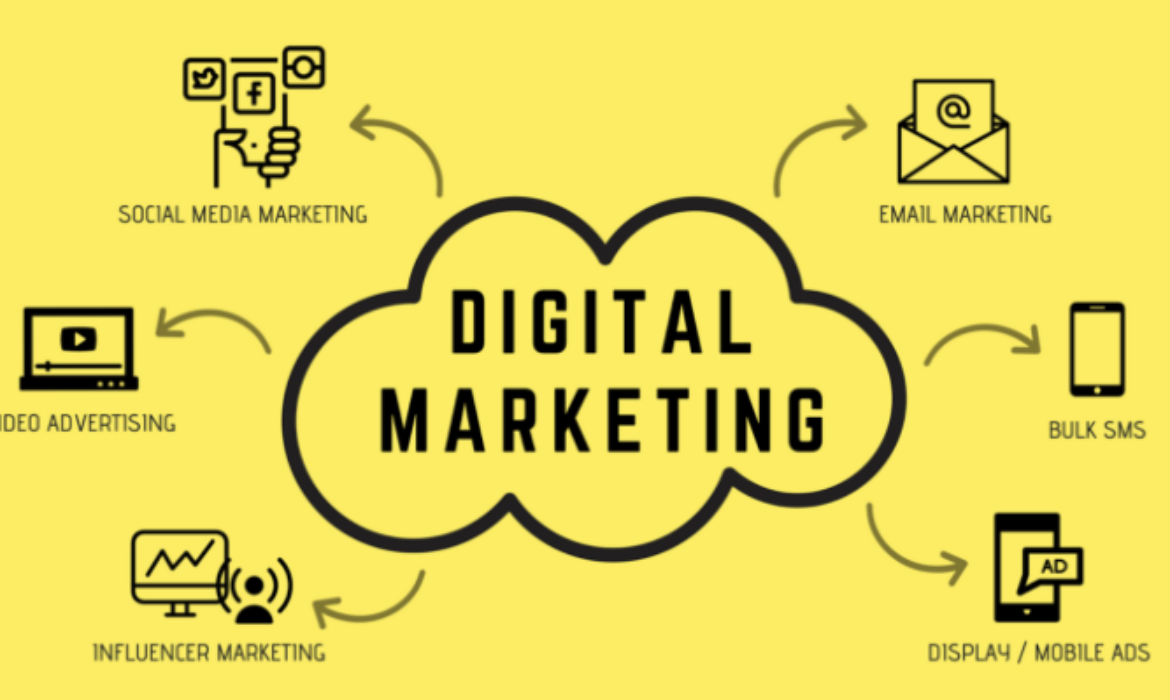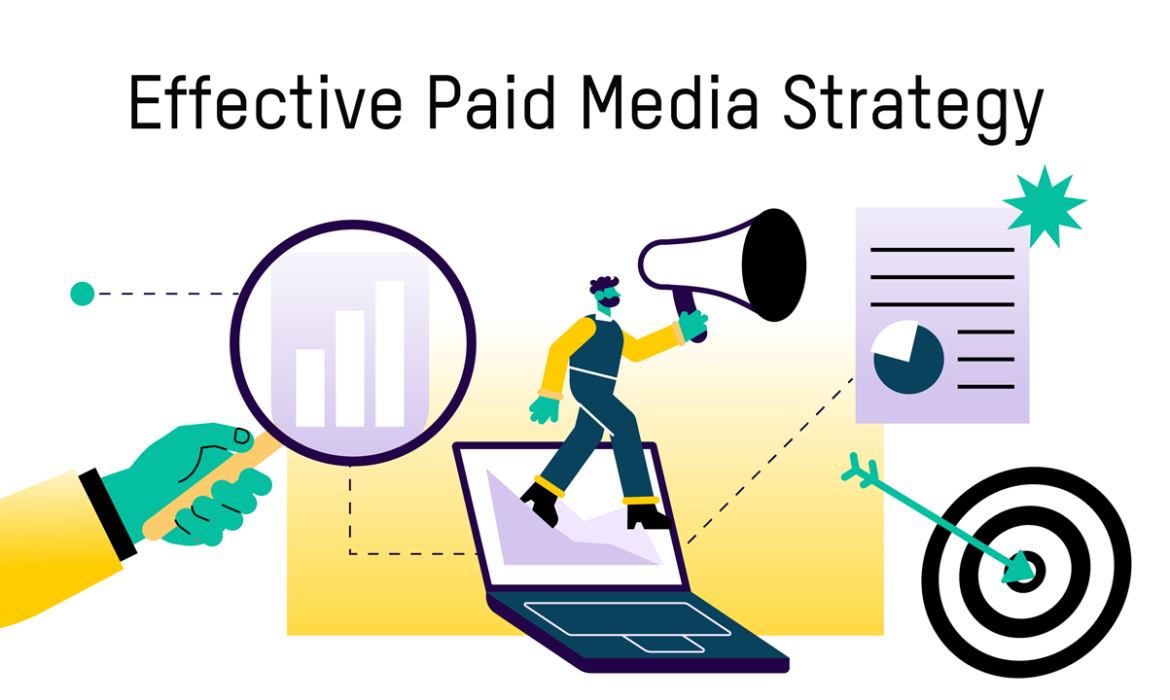Unveiling the Power of Strategic Content in Content Marketing
One phrase that keeps becoming more and more common in the constantly changing field of digital marketing is “strategic content.” Companies of all sizes are increasingly understanding how important it is to develop content strategies that complement their overarching marketing objectives rather than merely producing content for the sake of it.
Content Marketing Success Requires a Solid Understanding of Sustainable Content
Fundamentally, it is produced and disseminated to draw in and hold on to a certain audience. It is valuable, pertinent, and consistent material. In contrast to random content creation, it is carefully prepared to fulfil particular objectives within an all-encompassing marketing strategy.
The Strategic Content Pillars
Understand the audience:
It’s critical to have a thorough understanding of the target audience before producing any content. To determine their requirements, problems, preferences, and behaviours, do an in-depth study. Setting Goals: Each piece of content needs to have a clear intention behind it. Make sure every piece of content is in line with clear, quantifiable objectives, whether they are to raise brand awareness, improve website traffic, produce leads, or increase sales.
Keyword Research:
The foundation of SEO-driven content marketing is keywords. To find pertinent terms and phrases that the audience is searching for, do some keyword research. To improve the visibility of content in search engine results, strategically use these keywords in the article.
Content Planning:
Create a content calendar that lists the subjects, forms, and media outlets you will be covering. By doing this, you can maintain consistency and organization in the creation and release of material on a timetable.
High-quality content creation:
Put energy into producing information that genuinely benefits the audience. Focus on content above design when creating blog articles, videos, infographics, or podcasts, and strive to position the business as a reliable authority in the industry.
Optimized Distribution:
Making sure content reaches the target audience is just as important as simply producing excellent content. To increase the reach of material, use a variety of distribution methods, including influencer collaborations, email newsletters, social media, and guest blogging.
How to Include Sustainable Content in a Marketing Plan
After outlining the fundamental components of it, let’s examine how to effectively include it in the entire marketing plan.
Sync with business objectives:
Make sure that the content strategy closely relates to overarching business goals. The material should directly assist these objectives, whether they be growing a customer base, introducing a new product, or boosting sales.
Personalization:
To make content more relevant to certain audience segments, use data-driven insights. Make sure that content formats, tone, and messaging are appropriate for each audience segment’s unique requirements and preferences.
Lead nurturing:
Throughout the buyer’s journey, use thoughtful content to develop leads. Help prospects make a seamless transition from awareness-stage material that informs them about their issues to consideration-stage content that showcases solutions.
Thought Leadership:
Establish the company’s reputation in the sector by producing intelligent and provocative content. Provide the audience with knowledge, industry insights, and distinctive viewpoints to build authority and trust.
SEO Integration:
To increase the exposure of the website in search engine results, combine an SEO strategy with smart content. Improve the overall SEO performance of the website, obtain backlinks from reputable sites, and optimize content for relevant keywords.
Social Engagement:
Promote genuine connections with followers on social media sites by posting insightful content, answering messages and comments right away, and taking part in pertinent conversations. Engaging with social media not only makes the brand more visible but also fosters follower loyalty and trust.
Iterative Optimization:
Keep an eye on how well the material is performing at all times, and adjust as necessary.
Strategic content has become essential to content marketing strategies that are successful in the cutthroat digital environment of today. You can use content to propel a company toward measurable outcomes by knowing the audience, establishing clear objectives, producing excellent content, and maximizing its dissemination.
Mastering Link Outreach Strategy for High-Quality Backlinks
Within the ever-evolving field of search engine optimization (SEO), link outreach is a fundamental tactic used to increase website visibility and authority. Learning the art of it is crucial for companies looking to rank highly on search engine results pages (SERPs) and attract natural visitors to their websites as the digital landscape changes.
Why Link Outreach is Important:
The proactive process of contacting relevant websites or people to obtain backlinks to your own website is commonly known as link building. By serving as virtual testimonials, these backlinks let search engines know how reliable and pertinent your material is. In addition to increasing referral traffic, high-quality backlinks have a big impact on your website’s authority and SERP rating.
Recognizing the Value of High-Quality Backlinks:
Not every backlink is created equal in the dynamic world of search engine optimization (SEO). Backlink construction is an area where quality matters more than quantity. Google, in particular, gives preference to backlinks coming from reliable and pertinent sites. Many backlinks from unrelated or low-quality directories may not have the same authority as one backlink from a respectable website in your niche.
Developing a Successful Link Promotion Plan:
Determine your goals and target audience:
Identify the people that make up your target market and the particular websites or platforms they use.
Set specific objectives for your link outreach effort, such as raising brand awareness, boosting search engine ranks, or generating referral traffic.
Make extensive research:
Analyze competitor backlinks, industry influencers, and pertinent online forums to find possible link opportunities.
Give top priority to websites with a large viewership, relevant content for your niche, and strong domain authority.
Customize Your Outreach
Create engaging outreach emails that are personalized for each recipient, mentioning them by name and displaying a sincere interest in their information.
Stress the advantages of working together and how providing a connection to your website would help their audience.
Provide High-Value content:
Provide insightful, well-written material that is a great resource for people in your niche.
Make it easy for others to link to your content by framing it as a remedy for problems that your target audience faces regularly.
Strategically Follow Up:
Establish a methodical follow-up procedure to guarantee the highest levels of participation and reaction.
Remind recipients politely of your first pitch, highlighting the advantages of working together and the value proposition.
Top Strategies for Effective Link Promotion:
Preserve Transparency:
When pursuing backlinks, be truthful and open about your goals. Steer clear of manipulative or deceitful methods that can damage your reputation.
Encourage sincere Bonds:
Develop deep connections with influential people and website owners in your niche. Mutual support and long-term linkage opportunities might result from networking and teamwork.
Embrace Variety in Your Link Profile:
To build a natural and well-balanced link profile, look for a variety of backlink sources, such as industry magazines, reference pages, guest blogging, and niche directories.
Track and Assess Results:
Using analytics tools and metrics like referral traffic, domain authority, and search engine results pages (SERPs), continuously monitor and evaluate the outcomes of your outreach program for links. To optimize results, adjust your plan based on the knowledge you have gained.
Gaining proficiency in link outreach is crucial to improving a website’s exposure, authority, and organic traffic in the always-changing world of search engine optimization. By putting quality above quantity, developing tailored outreach plans, and developing real connections in your industry, you can fully realize the potential of link-building to take your SEO efforts to the next level. Accept the guidelines and best practices in this article to get started on the path to long-term SEO success with efficient link building.
Mastering the Art of Targeting Ads in Digital Marketing
Staying ahead of the curve is crucial for organisations looking to effectively reach their target audience in the ever-changing world of digital marketing. Targeting ads stand out among the many tactics as an effective means of reaching the appropriate customers at the right time. We’ll dive into the nuances of digital marketing for targeted ads in this extensive tutorial, examining its importance, tactics, and best practices to maximize your campaigns.
Comprehending Targeted Advertising
Marketing campaigns that are tailored to particular demographics, hobbies, habits, or other characteristics that correspond with a brand’s ideal client profile are known as targeted advertising. Targeted advertisements concentrate on presenting tailored messages to demographics most likely to interact with them, in contrast to traditional advertising, which aims to reach a large audience. This strategy improves the ads relevancy while also raising the chance of conversion, which raises the return on investment (ROI).
Targeted advertisements’ importance in digital marketing
Relevance is crucial in the digital environment we live in, as customers are constantly exposed to marketing messages. Businesses may produce content that connects with their audience and stands out from the crowd by using targeted advertising. Marketers may optimize ad spend and enhance overall campaign performance by identifying consumers who are more likely to be interested in their products or services by utilizing data analytics and consumer insights.
Techniques for Successful Targeted Advertising
- Audience Segmentation: Using demographics, interests, past purchases, and other pertinent factors, break up your target audience into discrete groups. Because of this segmentation, customized advertising campaigns that speak to each group’s unique needs and tastes can be made.
- Use Customer Data: Make use of data analytics solutions to learn more about your current clientele, including their browsing and purchasing habits, past ad interactions, and purchase histories. You can use this information to find audiences that are similar to your target audience and to guide your targeting ads strategy.
Dynamic Ad Content: Make ads that automatically change their content according to the demographics or browsing habits of the viewers. Audiences respond better to personalized messaging, which raises the possibility of engagement and conversion.
Retargeting Campaigns: Run targeting campaigns to get users back on your website who have previously interacted with it or expressed interest in your offerings, but who have not yet completed a desired action, like buying anything. You can attract these users back and encourage them to convert by using customized ads to remain at the top of their minds.
A/B testing: To find the combinations that work best, test various ad creatives, messaging, and targeting ads factors regularly. You may improve your ads over time and optimize for optimal efficacy with A/B testing.
The Best Ways to Make Your Targeted Ad Campaigns Better
Here are some ways:
- Clear Call-to-Action (CTA): Make sure that the call-to-action (CTA) in your advertisements is both clear and compelling, encouraging consumers to visit your website, make a purchase, or sign up for a subscription.
- Mobile Optimization: You should make sure your advertising is optimized for mobile viewing because most internet consumers access material on their smartphones. To guarantee a flawless user experience, this involves utilizing mobile-friendly formats, succinct language, and responsive design.
- Landing Page Optimization: To give users a consistent experience, match the content of your ads with the relevant landing page. To increase conversions, make sure your landing pages have clear messaging, quick loading speeds, and simple navigation.
- Ad Placement: Based on where your target audience is most likely to interact, choose the appropriate platforms and locations for your ad. Choose platforms such as social media, search engines, or outside websites based on the goals of your campaign and the demographics of your target audience.
Track and Evaluate Results:
Use important performance indicators like click-through rate (CTR), conversion rate, and return on ad spend (ROAS) to track and evaluate the results of your focused advertising campaigns regularly. Examine the data to spot patterns, improve ineffective efforts, and make wise financial decisions.
Within the fiercely competitive digital marketing realm, customized advertising presents a calculated method for connecting and interacting with your intended clientele. Businesses can maximize the performance and return on investment of their advertising efforts by utilizing audience segmentation, data analytics, and targeted content. Targeting ads may improve your digital marketing efforts and provide significant results by implementing the tactics and best practices described in this book.
Beyond Digital Marketing: Unleashing Business Potential
The digital landscape has become a crucial platform for businesses to flourish, innovate, and establish worldwide connections with consumers in the dynamic field of commerce. A new age of potential and prosperity has been made possible by the transformation of established business paradigms brought about by the arrival of digital technologies. Although digital marketing is still an important part of this shift, digital business involves much more than just marketing tactics. This article delves into the complex world of digital business, examining its importance, difficulties, and tactics required to thrive in the digital era.
Digital business includes a wide range of activities, such as automation, data analytics, online sales,, and e-commerce. Fundamentally, digital business uses technology to improve productivity, optimize workflows, and provide clients with unmatched value. Organizations of all sizes, from start-ups to global conglomerates, are utilizing digitalization to maintain their competitiveness and satisfy changing consumer needs.
The capacity of a digital company to transcend geographic boundaries and connect with clients at any time or place is one of its distinguishing features. The way we purchase has been completely transformed by e-commerce platforms, which provide convenience, customization, and choice at the touch of a button. Today’s consumers want smooth experiences across many channels, whether they are making purchases, reserving services, or accessing digital information. As a result, organizations must embrace a digital-first strategy.
The path towards digital transformation is with difficulties, though. Businesses adopting digital technology must manage challenging concerns like data privacy, cybersecurity, and digital inclusion. Protecting sensitive data and fostering consumer trust are critical issues for businesses working in the digital sphere due to the rise in online transactions and the growing dependence on data-driven insights.
Furthermore, companies trying to stay ahead of the curve face both possibilities and challenges as a result of the quick speed at which technology is developing. Emerging technologies, like as blockchain, the Internet of Things (IoT), artificial intelligence, and machine learning, have the potential to unleash unprecedented levels of productivity, customization, and customer interaction. But keeping up with these developments calls for ongoing education, flexibility, and an openness to change. It all because of digital marketing
Businesses need to take a comprehensive approach that unifies marketing with other essential areas like sales, operations, and customer service if they want to succeed in the digital world. Businesses may better understand the interests, behaviours, and pain points of their audience by utilizing data analytics and customer insights. This helps them create individualized experiences that connect with customers on a deeper level.
In addition, companies need to give priority to flexibility and agility due to changing consumer demands and market conditions. In today’s fast-paced digital market, being able to quickly pivot, experiment with new technologies, and iterate on plans based on real-time feedback is important for staying competitive.
Enterprises need to allocate resources toward constructing a robust internal digital infrastructure, in addition to concentrating on exterior aspects like client acquisition and retention. This entails building resilient IT infrastructure, encouraging a collaborative and innovative culture, and allocating resources for staff training and development to guarantee that teams have the know-how required to prosper in digital marketing.
In the end, digital business success comes down to the capacity to add value for clients while welcoming innovation and changing with the times. Businesses may create remarkable experiences that foster enduring loyalty and long-term success, increase operational efficiency, and open up new growth prospects by utilizing the power of digital technologies.
In summary, digital marketing is an essential part of the larger ecosystem of digital business, but it is only one part of a holistic plan meant to fully realize the potential of digitalization. Businesses may set themselves up for success in the digital age and prosper in a constantly shifting environment of opportunities and challenges by embracing technology, placing a high value on customer-centricity, and encouraging an innovative culture.
Paid Strategy Integration in SEO: Enhancing Online Clarity
In the current digital world, companies looking to thrive in cutthroat industries must have a strong online presence. Paid media stands out among the many digital marketing techniques as an effective means of increasing visibility, attracting relevant traffic, and eventually increasing conversions. Paid media, when carefully combined with search engine optimization (SEO), can open up a whole new world of possibilities for companies trying to make the most impression online. Let’s examine the nuances of paid media and how to use it to increase your SEO-paid strategy without taking precedence over natural search engine optimization efforts.
The Mergence of SEO and Paid Media
Even while SEO and paid media might seem like different marketing platforms, they can work together to provide beneficial results. Despite popular belief, including paid media in your SEO plan doesn’t hurt organic efforts—rather, it enhances them by broadening your audience and drawing in quality prospects. This is how SEO and paid media work together to improve your online visibility.
Increased Exposure and Focused Traffic
Enhancing a website’s organic presence in search engine results pages (SERPs) is the main objective of SEO. But getting to the top of the rankings might take a while, particularly in fields with intense competition. By prominently displaying advertisements at the top of search results, paid media provides a shortcut and guarantees instant visibility to visitors who are actively looking for pertinent information. Paid media brings tailored traffic to your website by focusing on particular demographics and phrases, which raises the possibility of conversions and income production.
Targeting Strategic Keywords
Any SEO plan must start with keywords since they link user intent with pertinent content. Paid strategy campaigns use keyword targeting to make sure people looking for items or services comparable to yours see your advertising. You may drive targeted traffic to your website and gradually raise your organic search rankings for high-converting keywords by finding them and using them in your paid advertisements.
Comprehending Paid Media Dynamics
Paid media refers to a variety of online advertising formats, including sponsored content, display adverts, and pay-per-click (PPC) campaigns. Paid media is different from organic techniques like social media interaction or content marketing in that it requires spending money to get ad positions across digital platforms. Businesses may guarantee instant visibility to their target audience by purchasing ad space, which will increase website traffic and brand exposure.
Data-Based Perspectives
The capacity of sponsored advertising to offer useful data through analytics and tracking technologies is one of its biggest benefits. Through the monitoring of indicators like click-through rates, conversion rates, and demographic information, organizations can acquire important insights into the behaviour and preferences of their target audience. These insights support data-driven decision-making for organic SEO tactics like content production and keyword targeting, in addition to providing information for paid strategy campaign optimization.
Quickened Exposure of Brand
Increasing brand recognition is crucial to winning over customers’ credibility and confidence. Paid strategy quickens the process of increasing brand visibility by exposing your business to a larger audience in less time than organic techniques like content marketing and social media.
Enhancing the User Interface
User experience (UX) is a key factor in evaluating a website’s success in today’s digital environment. Every element of the user journey, including mobile responsiveness and page load speed, affects engagement and conversion rates. Through paid marketing, companies may optimize user experience and boost conversion rates by directing consumers to specific landing pages based on their search queries or preferences. You may facilitate a smooth transition for visitors from their first click to their ultimate purchase by placing sponsored advertising in line with relevant, high-quality content.
To sum up, paid advertising is an invaluable tool for digital marketers, providing unmatched chances to boost online presence and attract specific traffic. Paid media may boost the success of your organic efforts when used strategically in conjunction with SEO, hastening your journey to online success. In today’s competitive digital market, businesses may maximize their exposure, generate qualified leads, and eventually achieve sustainable growth by utilizing the synergy between paid media and SEO. Accept the possibility that bought media may improve your SEO paid strategy and help your brand become more well-known and profitable.
The Complete Handbook of Niche Link Building for SEO Achievement
SEO (Search Engine Optimization) continues to be a vital component in the dynamic world of digital marketing since it generates natural traffic for websites. Of all the SEO tactics available, link building is one of the most important for improving search engine rankings and creating authority within your industry. But in the world of its markets, link-building needs a customised strategy to guarantee efficacy and relevance. We explore the nuances of speciality link development in this extensive book, providing tips and tactics to improve your SEO efforts.
Knowing How to Build Niche Links
Building relationships inside your speciality group is the main goal of its building, as opposed to generic link building, which aims to reach a wider audience. Acquiring links from reputable sites in your industry raises your website’s search engine ranking and establishes your authority and relevance to your intended audience.
Its Significance
In search engine optimization, relevancy is critical. Links originating from websites that share your content or themes are highly valued by search engines. Give priority to websites that are directly linked to it when obtaining backlinks. If your website is about organic gardening, for example, getting connections from seed companies, gardening blogs, or agricultural colleges would be better than getting links from irrelevant sites.
Superior Quality Compared to Quantity
When it comes to creating links, quality always wins out over quantity. Your SEO efforts may benefit more from a small number of high-quality backlinks from reputable websites in your niche than from a large number of low-quality connections. Concentrate on obtaining backlinks from reliable sites that have a solid track record of creating high-quality content and high domain authority. Investigate it carefully to find possible link opportunities, then rank the websites that best fit your audience’s interests and brand values.
Developing Connections with Specialist Influencers
Developing deep connections with thought leaders and influencers in its markets can greatly improve your link-building efforts. Through industry events, joint ventures, and social media, interact with influencers in your sector. You may boost the possibility that influencers would link back to your website or mention your company in their content by building a relationship with them and offering them value. Keep in mind that reaching out to influencers should be done with sincerity and authenticity, with an emphasis on developing real relationships rather than just obtaining backlinks
Making Eye-Catching Specialty Content
A key component of successful link-building is content. To gain backlinks from reputable websites in your field, you need to provide interesting, high-quality content that appeals to your target market. Do in-depth keyword research to find trends and subjects that are pertinent to your area. Provide educational guides, films, infographics, and articles that speak to the needs and interests of your readers. You become a respected authority in your niche and draw in natural backlinks by continuously creating high-quality content.
Keeping an Eye on and Examining Your Link Profile
Monitoring and analyzing your link profile regularly is necessary for effective link building. Audit your backlink profile regularly to find any spammy or low-quality links that could undermine your SEO efforts. want tools like Ahrefs, Moz, or Google Search Console to track backlinks, keep an eye on changes to your link profile, and spot areas that could need work. Your link development activities should support your overall SEO strategy, so make sure you’re alert and aggressive in managing your link profile.
In conclusion, by prioritizing relevance, quality, and relationship-building within your niche, you can establish authority, improve search engine rankings, and attract targeted traffic to your website
Unleashing the Power of Data and Analytics
Organizations from all sectors depend increasingly on analytics and data-driven insights in today’s quickly changing digital ecosystem to obtain a competitive edge, improve operational effectiveness, and inform strategic decision-making. With the help of analytics and data, businesses can now foresee trends, find hidden patterns, and take actionable insights from massive amounts of data, making them valuable assets. Its effect is ubiquitous in modern corporate operations, ranging from speeding internal procedures to optimizing marketing efforts and enhancing customer experiences.
The Development of Data and Analytics:
As a result of technological breakthroughs and the rapid expansion of data, the analytics sector has experienced tremendous change throughout time. More advanced approaches like machine learning, artificial intelligence (AI), and predictive analytics have replaced conventional ways of data analysis. With the use of these breakthroughs, firms can now more accurately predict market trends, spot possible hazards, and seize new opportunities by deriving deeper insights from complicated datasets.
The Use of Data in Making Decisions:
Well-informed decision-making is essential to an organization’s success in today’s data-driven world. Businesses can stop depending just on gut feelings or conjectures and start making data-driven decisions supported by actual evidence by utilizing analytics. Organizations may reduce risks, maximize performance, and maintain a competitive edge in a market that is becoming more and more competitive by utilizing data-driven insights in decision-making processes related to product pricing, resource allocation, and strategic initiative development.
Driving Business Transformation:
Data and analytics have the power to not only enable small-scale enhancements but also to fundamentally alter businesses. Organizations can find new revenue streams, optimize procedures, and spot inefficiencies by examining historical data and real-time indicators. Additionally, businesses may customize client experiences, target particular market segments with products and services, and cultivate enduring customer loyalty thanks to data-driven insights.
Increasing Operational Efficiency:
Analytics is essential for streamlining internal procedures, raising output, and cutting expenses in businesses. Data and analytics help companies find bottlenecks, optimize workflows, and make data-driven decisions that lead to operational excellence in a variety of fields, including supply chain management, labour optimization, and predictive maintenance. By applying analytics, firms can improve workflow automation and resource allocation, leading to increased efficiency and agility in a dynamic business environment.
Handling the Difficulties of Privacy and Data Governance:
Although there is no denying the advantages of analytics and data, businesses also need to manage the complicated world of privacy, security, and data governance laws. With the rise in data breaches and privacy issues, it is critical to protect sensitive data and make sure regulations are followed. Building consumer trust and protecting the integrity of data assets requires putting in place strong data governance structures, enforcing strict security measures, and abiding by data privacy laws.
The Future of Analytics:
With continuous technical advancements and the increasing amount of data produced by networked devices and digital platforms, its future appears to be extremely promising. Predictive analytics and prescriptive insights will become more possible as AI and machine learning algorithms advance. This will allow businesses to foresee market trends, reduce risks, and seize new opportunities with previously unheard-of speed and precision.
To sum up, data and analytics have become critical resources for businesses looking to prosper in a data-driven and fiercely competitive corporate environment. Through the utilization of analytics, companies may convert unstructured data into meaningful insights that facilitate well-informed decision-making, optimise operational effectiveness, and promote creativity in all facets of their business operations. Businesses that adopt its strategies will be best positioned to thrive in the digital era as long as technology and data volumes continue to increase.
Content Marketing Power to Drive Growth in the Digital Age
Businesses are constantly looking for creative ways to stand out from the competition and draw in their target audience in today’s fast-paced digital market. In an ever-changing landscape, it has become a potent instrument that helps businesses engage with their customers, increase brand recognition, and foster long-term expansion. This post delves further into the topic of it, examining its importance, tactics, and effects on contemporary companies.
Comprehending Content Marketing
Creating and disseminating worthwhile, pertinent, and captivating information is the foundation of it, which aims to draw in and hold onto a target audience. In contrast to conventional advertising, which promotes goods or services directly.
The Importance of Content Promotion
It is a welcome diversion at a time when customers are constantly exposed to commercials and sales pitches. Brands can break through the clutter and connect with their audience more deeply by producing top-notch content that informs, entertains, or inspires. Additionally, it enables companies to stand out in crowded markets, demonstrate their subject-matter expertise, and build thought leadership.
Essential Elements of an Effective Content Marketing Plan
Research on Audiences: Crafting content that resonates with your target audience requires an understanding of their requirements, preferences, and pain areas. To understand the demographics, interests, and online habits of your audience, conduct in-depth research.
Content Planning: Create a thorough content strategy in line with the insights of your target audience and your business goals. Ascertain which content formats—blog articles, videos, infographics, or podcasts—will best captivate your audience.
High-quality content creation: Involves concentrating on producing well-written, pertinent, and educational information. For the purpose of captivating readers and building credibility, always put quality before quantity when creating blog posts, videos, or images.
Content Distribution: Once you’ve produced engaging content, expand your audience by using a variety of distribution methods. To get the most visibility and interaction, distribute information via email newsletters, social media, your website, and trade journals.
Engagement & Interaction: Promote audience participation by asking for and receiving questions, comments, and feedback about your work. Interact with your audience by answering questions, leaving comments, and promoting insightful dialogue about your company and products.
Measurement and Optimization: Monitor important performance indicators to gauge the success of your its campaigns, such as website traffic, engagement rates, and conversion rates. Refine your approach, maximize the effectiveness of your material, and promote ongoing development with data-driven insights.
Content Marketing’s Effect on Business Growth
When done well, It may provide companies with a wide range of advantages, such as:
Enhanced Brand Awareness:
Brands can become more visible and make a lasting impression on consumers by regularly producing high-quality content.
Enhanced Customer Engagement: Content that engages users builds stronger bonds with them and motivates social media sharing, brand advocacy, and return visits.
Increased Discoverability and Organic Traffic to Your Website:
Well-written content that is optimized for pertinent keywords can raise your website’s search engine ranks and improve its discoverability.
Lead Generation and Conversion:
Good content draws in prospects and directs them through the sales funnel to become customers. It is a potent instrument for lead generation.
Building Credibility and Trust:
Brands can gain the audience’s trust and loyalty by presenting themselves as knowledgeable and authoritative sources within their sector through the creation of useful and authoritative content.
In the current digital era, It is now essential for companies looking to prosper in a cutthroat market. Brands may foster meaningful connections, establish a stronger connection with consumers, and eventually achieve sustainable growth by producing content that is valuable, relevant, and engaging. Adopting a strategic approach to content marketing will remain crucial for staying ahead of the curve and achieving long-term success as technology advances and consumer preferences change.
What Is A Subdomain? Everything You Need To Know
A subdomains is a type of domain that is part of another domain. You can think of it as a separate branch from your main website. For example, if you’ve ever read a WordPress blog, you might have noticed that the domain (or URL) is the name of the blog + “.” + worddpress.com (i.e., blogname.wordpress.com). In this case, wordpress.com is the domain, and blogname.wordpress.com is the subdomain.
Subdomains can be used for a number of reasons, from prototyping sites to using two different themes. In this article, we’ll discuss what a subdomain is, when to use a subdomain, how subdomains influence search engine optimization (SEO) and how to set one up through your domain registrar or web host.
Subdomain Definition
A subdomain is an extension or add-on to your business domain name. Subdomains are used to organize different functional parts of the website.

Say you have a domain name yoursite.com. You can have subdomains such as blog.yoursite.com or store.yoursite.com so that your store and blog can be designed, organized and optimized independently from your main website. As you continue adding different functions to your domain website, you can use new subdomains to separate them from the main website.
The URLs of domain names and subdomains are treated as separate entities—which brings us to the question of how a subdomain appears in the domain URL.
Structure of a Subdomain
The subdomain is appended before your domain name to create a new URL. Once this URL is created, it can have pages of its own as with any website.
Characteristics and Parameters of a Subdomain
Here are some important things to know about a subdomain:
- A domain can have up to 500 subdomains
- You can create multiple levels of subdomains such as store.product.yoursite.com, test.forum.yoursite.com, etc.
- Each subdomain can be up to 255 characters long, but for multi level subdomains, each level can only be 63 characters long
When to Use a Subdomain
Subdomains are used to:
- Streamline site hierarchy
- Improve user navigation
- Create a prototype or test version of a website
- To use two different themes with different functions for one domain (e.g., a blog, forum, e-commerce store, etc….)
- Create location- or language-specific sites
- To create a mobile-specific site
How To Create a Subdomain
The process of setting up a subdomain will vary slightly depending on where your subdomain is registered. However, generally the process to create a subdomain will look something like the following:
Here’s how to set up a subdomain:
- Navigate to your domain name registrar or web host (e.g., Bluehost or DreamHost)
- Select domains from your account dashboard
- Find and select subdomains
- Create your new subdomain
For more information, visit your domain registrar or web hosting provider’s help center for detailed instructions on how to create a subdomain. Additionally, your provider should be able to assist further via support should you have any issues along the way.
Subdomain vs Subdirectory
There is some confusion around subdomains vs subdirectories, and rightfully so. The two are seemingly very similar, yet each has a different structure, site organization and impact on SEO. A subdirectory uses folders under the primary domain name to organize content on your website. A key difference is that subdomains are treated as separate websites and do not inherit any domain authority of the parent website. Its SEO has to be built from scratch.
Subdomains vs subdirectories at a glance:
- Subdomain:yoursite.com
- Subdirectory:com/blog
Both subdirectories and subdomains have their own advantages and disadvantages, and ultimately it’s your decision what your website needs
How To Make A Website For Your Brand Or Small Business
Whether you’re a freelancer or small business owner or you simply want a space to house your professional achievements, it’s smart to invest in a website that helps you expand your audience, convert leads and establish a credible online presence.
How to Make a Website: A Step-by-Step Guide to Get You Going
Your website is the most effective sales and marketing tool in your arsenal. In just five easy(ish) steps, you can create a beautiful personal or business website that engages visitors and excites them to work with you. Here’s how to get started.
1. Pick a Domain Name
A domain is the unique name of your website.
You can choose any name you want, but it’s best to have one that matches your business or professional name. Not only does this keep your branding consistent, but it can also significantly impact how you appear in search engine results. A good domain name may help you place higher in rankings, which can increase the number of people who click to access your site.
As you’re brainstorming domain names, heed these helpful tips:
- Include keywords relevant to your business to boost your visibility in search engines.
- Ensure it’s easy to spell.
- If you have trouble brainstorming, use a domain name generator as a jumping off point.
- Keep your domain short to make it easier for visitors to remember.
- Avoid abbreviations, acronyms, hyphens and numbers.
- Aim to use traditional top-level domains, or TLDs, such as .com or .net or one that best relates to you or your business.
- Make sure no one else is already using it. While you can purchase a domain from someone else, this can get expensive. You may be better off picking another name or using a different top-level domain, like .net, instead.
2. Register Your Domain and Pick Your Design and Hosting Providers
Once you’ve settled on a domain name, you’ll need to register it with a domain registrar. You can do this using a website like Domain.com or Network Solutions. Keep in mind that these providers simply register ownership of the domain for you, which may cost between $10 and $20 per year, depending on your TLD.
You’ll still need to find another provider to host the URL where you will build your website and potentially use another program to design it. To simplify things, you may choose to register your domain at a provider that offers registration, hosting and design capabilities.
If you don’t have much, or any, coding experience, you may want an all-in-one option like WordPress, Squarespace or Wix.
If you choose to use separate companies to manage your web hosting and designing, look for a hosting service that offers perks such as tech support, a free domain name or Secure Sockets Layer (SSL) certificate.
You should highly weigh the SSL certificate as it’s a global standard security technology that enables a secure connection and protects your and your visitors’ data and sensitive information. Simply put, this security measure adds the S in HTTPS at the front of a website’s URL. Search engines and visitors look favorably upon it.
These features are more common with all-in-one providers, but there’s no guarantee, so be sure the one you choose offers them before you purchase a plan.
Popular web hosts with and without built-in design integrations are Bluehost, DreamHost, GoDaddy and InMotion.
If your web host doesn’t provide any integration features, some third-party design programs you might consider are Canva and Adobe Creative Cloud applications. You can create designs on these platforms and embed them onto your website pages.
3. Add Useful Pages and Engaging Content

You have many options when it comes to how you organize your content about your business and its services.
That said, strive to include these important pages on your website:
- A striking homepage.The central hub of your business website should captivate people and tell them exactly what you do and whom you serve. Incorporate eye-catching graphics, readable fonts, concise and clear descriptions and enticing calls-to-action.
- An enlightening ‘About Us’ page.Share the origin story of your business. Highlight your achievements, mission and values. You can also introduce any team members to foster deeper connections with customers.
- Booking or shop page.Drive more revenue and integrate a third-party online scheduling platform or an e-commerce platform, such as HoneyBook or WooCommerce.
- An accessible contact page.Include social media accounts, emails, phone numbers, addresses and a contact form to make it easier for people to reach you. If it fits your business, add your operating hours, too.
- Memorable content.Sharing compelling content establishes you as an expert in your industry and helps grow a loyal community for your business. This might include blogs, videos, podcast episodes, case studies and more. As a bonus, this content may help boost your ranking in search results and increase site visitors.
- A robust FAQ page.Giving answers to common questions not only helps build more trust with your brand, but it may also reduce the number of calls and support tickets you receive.
- Testimonials and press coverage.Boost your credibility by sharing your successes. Create a page that shares positive reviews about your services and include any mention of your business in notable media outlets.
4. Optimize Your Website for Search Engines
Search engine optimization, or SEO, is the practice of refining your business website so your pages rank higher in search engine results pages (SERPs), most notably Google. It’s what helps people find you.
As you build your website, keep these basic SEO practices in mind to increase your visibility and drive more traffic:
- Use relevant phrases, called keywords, throughout your posts and pages. Don’t use keywords just for the sake of them, though. Make sure your choices are intentional. Overuse may negatively impact your ranking.
- Consistently publish valuable content for your customers or readers.
- Perform routine content audits or cleanups to see what you can consolidate or refresh.
- Keep your website’s loading speed as low as possible by optimizing images or enabling browser caching. These tweaks can help your webpage rank higher in search engine results. You can measure your page speed on GTmetrix. (Learn more about the importance of webpage loading speed.)
- Ensure your design and content work properly on computers, mobile phones and tablets. Do not underestimate your website’s performance on mobile devices. Up to half of web traffic now comes from smartphones.
It’s great to have a beautifully designed business website, but search engines want to see more than that to establish your authority when they index it in their search results.
As you optimize your site for search, make sure you’re keeping your visitors in mind. You’ll want to choose easy navigation systems and build pages that enable fast load times. To accommodate a range of user abilities, follow Section 508 guidelines to make your site as accessible as possible.
5. Review Your Site Before You Hit ‘Publish’
Before you unleash your website into the real world, you’ll need to test it to make sure it works properly.
Among other things, make sure you:
- Read through your content to ensure everything is accurate and error-free.
- Check for any broken links.
- Remove any filler content from your website theme or template.
- Test your website across browsers like Google Chrome, Mozilla Firefox, Safari and more.
- Connect your website to Google Analyticsto monitor its performance.
Once you’re ready, hit publish. To help drive traffic to your newly minted website, share it with friends, market it with clients and include it on your LinkedIn, Twitter, Instagram, Facebook and other social media profiles.
Keep Your Site Up to Date
You aren’t done with your site the minute you hit publish. To remain high in search rankings and improve your visitors’ experience, you’ll need to consistently maintain your website. Consider adding the following to your webmaster to-do list:
- Use webmaster and analytics tools, such as Google Analytics, to monitor how people use your site. Some website engagement metrics to track include bounce rates, click-through rates and average session duration.
- Regularly update your website with blog posts, products and promotional offers.
- Perform monthly reviews to ensure all aspects of your website, including internal and external links, pages and plug-ins, are working as intended.
- Update your “About Us” page with new team members or achievements.
As time goes on, you may want to foster relationships with other business sites to establish credibility and improve your SEO. When other important websites link to your website, search engines see your site as more credible and worthy of being ranked higher in the results.










